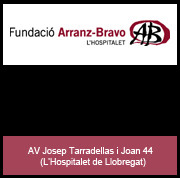Exhibitions
An open body: the scientific and artistic look at the sick body
An analysis of the relationship between medicine and cinema at the Girona Film Museum.

Medicine and cinema transformed the perception of the human body and its ailments at the end of the 19th century, establishing a dialogue between both disciplines that is especially evident in the representations of the sick body between 1880 and 1930, with a notable parallel between medical diagnostic devices and the first cinematographic filming tools. Now, this approach takes shape in the exhibition 'A cos obert', inaugurated at the Girona Cinema Museum on 13 December.
This exhibition, curated by Carolina Martínez, Carme Pardo Salgado and Alan Salvadó , explores the link between the visual technologies of medicine and early cinema. Wilhelm Röntgen's discoveries of X-rays and microscopic images opened windows into the interior of the body, while the Lumière brothers brought the first moving images of landscapes and faces to life. This confluence turned the representation of the sick body into an object of artistic and social analysis.

Through 62 photographs and 21 audiovisual fragments, the exhibition is divided into three axes that explore the representation of the sick body and its control. The first axis addresses the anatomical-clinical gaze, showing how photography and cinema from the origins revolutionized the study of the body, turning illness into a spectacle. These images oscillate between the grotesque, rehabilitation and, often, parody, with cinematic gags that ironically mocked medical advances. The second axis focuses on the Great War and pandemics, where the fragmented and affected body becomes a witness to traumatic experiences. Here, war photography, mostly anonymous, spread a theatrical look at the wounded body, while the psychic illnesses of soldiers were made invisible, in contrast to the visual overexploitation of female hysteria, evidencing a gender and morality bias. Finally, the third axis addresses a biopolitical perspective, a concept developed by Michel Foucault in 1976, which analyzes how power manages life and the body as political objects. In this context, hospital architecture and the institutionalization of medical practices exemplify this disciplinary perspective.

The exhibition, which can be visited until April, also aims to be an informative project and highlights how the scientific gaze, both external and internal, exercised on the body during that period, profoundly influenced avant-garde art, while at the same time consolidating an institutional mechanism of control over the human body. This control included both the registration and the visual fragmentation of the body, with an obvious impact on artistic and social perception. From the medical field, the camera began to be used not only for scientific purposes, but also to establish a visual pedagogy, playing between fascination and control. Thus, figures such as Charcot, Marinescu or Barraquer were consolidated as key figures in this new conception of medicine and cinema. The images of patients looking directly into the camera, showing an apparent serenity that contrasts with the implicit suffering, are a clear example of this combination between the inheritance of 19th century physiognomic practices and the codes established by the photographic portrait of the time.
'A cos obert' reflects on the evolution of our perception of the body through technological and artistic advances. Born from the contributions presented at the 14th International Seminar on the Antecedents and Origins of Cinema , organized by the Cinema Museum and the Research Group on the Origins of Cinema (GROC) of the UdG in November 2023, the exhibition offers a visual and conceptual journey that challenges both science and art.









